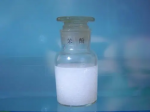read: 1745 time:2022-07-21 11:32:41 from:
Phenol is commonly known as carbonic acid (carbolicacid). Structural formula C6H5OH. colorless or white crystal, turns pink in air or sunlight. Slightly soluble in water, easily soluble in ethanol, ether, chloroform, glycerol, carbon disulfide, etc., almost insoluble in petroleum ether and alkanes. Widely used in the manufacture of dyes, synthetic resins, plastics, synthetic fibers and pesticides, as raw materials or solvents.

What are the functions and uses of phenol
1. Can be used to make phenolic plastics (Bakelite), synthetic fibers (nylon), pharmaceuticals, dyes, pesticides, etc.
2. Phenol can coagulate protein, bactericidal effect, phenol dilute solution is the earliest use of pharmaceutical spray disinfectant.
3. Phenol is a disinfectant and antiseptic. Phenol drugs are protoplasmic poison, can make the protein coagulation precipitation and play antibacterial effect, strong penetration of the tissue. At low concentrations (0.0125% to 0.02%), it has an antibacterial effect, and at high concentrations (1% to 2%), it can kill bacteria and fungi, but it is not effective against bacterial buds and viruses. Under acidic conditions, it can give full effect, but under alkaline conditions or in the presence of organic matter, the effectiveness is poor. Low concentration has irritation and local anesthetic effect on skin and mucous membrane, and high concentration has corrosive effect. Its water solution has the strongest antibacterial effect, oil and glycerin solution have weakened antibacterial effect and irritation. It is commonly used clinically for the disinfection of instruments, utensils and houses, but is corrosive to metal instruments. It is also used to stop skin itching.
4. Phenol resin, caprolactam, bisphenol A, salicylic acid, picric acid, pentachlorophenol, 2,4-D, adipic acid, phenolphthalein n-acetylethoxyaniline and other chemical products and intermediates, in chemical materials, alkyl phenols, synthetic fibers, plastics, synthetic rubber, pharmaceuticals, pesticides, fragrances, dyes, coatings and oil refining industries have important uses.
5. Phenol can also be used as a solvent, experimental reagent and disinfectant, and the aqueous solution of phenol can make the separation of proteins from DNA on chromosomes in plant cells, which is convenient for staining DNA.

Jincheng Petrochemical's 300000 ton polypropylene plant successfully trial production, 2024 polypropylene market analysis

The ABS market remains sluggish, what is the future direction?

Market differentiation of bisphenol A intensifies: prices rise in East China, while prices generally decline in other regions

The production method and process flow of silicone acrylic lotion, and what are the common raw materials